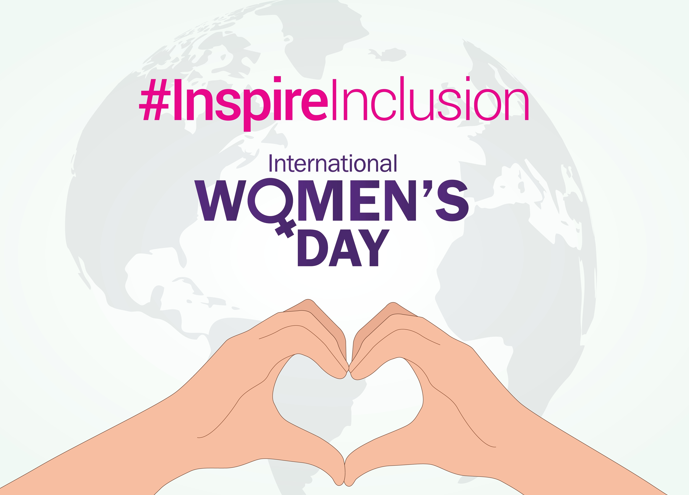Time and time again, the benefits of gender diversity in the workplace have been praised but women are still having trouble breaking through the glass ceiling. This is especially the case in the banking sector where progress has been grindingly slow in recent years.
In recent decades, efforts have been made in an attempt to bridge the inequality separating men and women. In the pursuit of increasing female representation on boards, some countries have chosen to impose gender quotas to top businesses whilst others have decided to follow a more voluntary approach where companies vow to increase gender equality and set their own targets.
Are gender quotas the best approach to tackle the lack of gender diversity in the workplace? Which countries are faring best and who are being left behind in terms of gender equality?
To offer some insight into this problem of long standing and provide some potential remedies, RBI conducted its own research into the subject. The results of this report are published and analysed in this article.
The Top 10
To get an overall view of the situation in Europe, RBI sampled the four biggest banks by asset size in 10 European countries: France, UK, Germany, Spain, Italy, Norway, Ireland, Netherlands, Switzerland and Belgium.
RBI acquired data on the members of the board of directors and executive committees of these banks in the aim of filing a country-per-country profile of women representation in the banking sector and get an overall picture of where the European banking sector is heading.
How well do you really know your competitors?
Access the most comprehensive Company Profiles on the market, powered by GlobalData. Save hours of research. Gain competitive edge.

Thank you!
Your download email will arrive shortly
Not ready to buy yet? Download a free sample
We are confident about the unique quality of our Company Profiles. However, we want you to make the most beneficial decision for your business, so we offer a free sample that you can download by submitting the below form
By GlobalDataTo understand where the problem stems from, RBI also examined the gender of the people at the top, in charge of the important decisions: the CEOs and chairmen of these banks.

Europe’s stagger towards gender equality
There are a number of major trends present in the European banking sector. Some observations point towards a positive and progressive step towards gender equality while others show a less clear picture with more nuanced results.
If we can be sure of one thing, it is that there is still a recurring problem of women failing to reach the top, not being put in charge of executive decisions and not getting promoted to positions of high standing (CEO and chairman). Some progress has however been made on the board of directors, with a high percentage of women being present on these boards across Europe.
The average proportion of women on the board of directors of the top banks across our sample is 30.43%. Reaching the 30% target set by many as a guideline is a good indicator that we are heading in the right direction and starting to see change in the banking sector. Nevertheless, large discrepancies can be observed from one country to the next as the median is set at 26.32%.
In terms of gender diversity on the board of directors, France and Norway are leading the way with women representing on average respectively 43.38% and 47.28% of their top banks’ board of directors. At the bottom, with some catching up to do, Spain and Switzerland’s comparable figures are roughly one half of the leading countries, standing respectively at 22.03% and 22.69%.
As for gender diversity on the executive committee, Norway and Spain score best. Women represent respectively 15.47% and 18.53% of the executive committee. At the opposite end, women in Germany and Ireland reach a measly 6.94% and 7.04% respectively on executive committees of top banks.
The average percentage of women on the executive committee of the top banks is 11.35%. These numbers are considerably lower, nearly three times smaller, than the numbers found for the board of directors. These observations unveil the extent of the problem as it applies not to a small, contained group of European countries but to the whole of Europe.
Alarmingly, only 30% of European countries in this sample have at least one woman in the executive committee in all of their top banks.
Germany, lagging behind
Back in 2013, an RBI report on gender equality in the banking sector ranked Germany at the bottom of the list, with a meagre 4.9% of women on the executive committee of Germany’s top banks. A harsh light was shone onto Deutsche Bank in particular, with not one woman present on their executive committee. However, women in Deutsche Bank had a better representation in slightly lower and less powerful positions, with 40% of their board of directors made up of women.
Since then, Germany is still lagging behind and is bottom for gender equality in respect of the executive committee, with a modest 6.94% of women on the executive committee of their top banks. Indeed two major banks, Commerzbank and DZ Bank, have no women on their executive committee.
Germany fares only slightly better at board level, placing fifth but still boasts no female CEO or chairwomen in its four biggest banks. This is an alarming phenomenon in the banking sector whereas women seem to plateau at a certain level –the board of directors – and cannot breakdown the barriers to reach the top of the career ladder – executive committee, chairwoman or CEO.
In January 2016, Germany implemented a 30% quota for the top 100 publicly traded companies. These include two of Germany’s top four banks, Deutsche Bank and Commerzbank. Both of these have successfully surpassed the 30% quota reinforced on the board of directors.

France and Norway leading the way
Norway and France are topping the charts in gender equality both in terms of the board of directors and the executive committee. Three of Norway’s top banks and three of France’s top banks are in the ten best banks in Europe for gender equality on the board of directors and both countries have one of their top banks ranking in the top ten banks in Europe for gender equality on the executive committee.
Norway and France are also leading the way in gender equality, placing in first and second place respectively in the ten best countries in Europe for gender equality on boards of directors while they are second and third respectively in the ten best countries in Europe for gender equality on executive committees.
Since RBI’s 2013 feature, France has seen considerable improvements in the representation of women in its banking sector. In 2013, France was also leading the way in gender equality with 30.9% of France’s top banks’ board members women. Banks in France have not stopped exceeding themselves over the years, with women currently representing 43.38% of the members on the board of directors in these top banks.
So, what makes France and Norway thrive?
Well, gender quotas might just be the answer. Norway put in place quotas in 2003 with a target of 40% of women on the board of directors of top companies to be reached by 2008. France also recently implemented quotas in 2010 with a 40% target to be achieved by 2016 for public-limited companies.
Norway has successfully reached and surpassed its target. France has made substantial progress and is on its way to reaching its target with two of their top banks having already achieved it. BPCE and Credit Agricole still have to catch up. Nevertheless, Credit Agricole is very close to achieving this 40% target and both banks have over 30% of women on their board of directors.
Norway is a particular rising star when it comes to gender equality, being the only European country out of the sample to have two female CEOs, yet alone one.
Spain, the inbetweener
Spain is an intriguing case. It is hard to pinpoint the country’s stance on gender equality, Spain being on both ends of the spectrum. On the one hand, Spain is the top European country in terms of gender equality on the executive committee while, on the other hand, it is the worst European country in terms of gender equality on the board of directors.
Spain has made the most significant progress compared to other European countries when it comes to the representation of women at the top. Three of its top banks appear in the top ten banks for gender equality on executive committees and it is one of the countries with the biggest number of chairwomen. Although it is having trouble achieving gender equality on the boards of directors, it seems Spain has entrusted more women with the executive decisions than any other European country in our sample.
Furthermore, Spain has made some progress since 2013. In 2013, the percentage of female board members stood at 18.7%. Three years later, this number has increased to 22.03%.
Spain introduced in 2007 a recommended quota of 40% to be reached by 2015 via the Gender Equality Act. This quota, however, is a recommendation rather than an obligation and applies only to public-limited companies with more than 250 employees.
None of Spain’s top banks have achieved this target, Banco Santander reaching the highest percentage of women on their board of directors at 31.25%.
Ranking bottom
Switzerland and Ireland rank bottom. Both countries feature no women as chairwoman or CEO in any of their top banks. Furthermore, both countries implemented quotas that top banks have not respected. In Switzerland, gender quotas were introduced in 2006 with a target of 30% to be achieved by 2011. It is now 2016 and not one of Switzerland’s top banks have come close to that target, UBS being the top bank with the most women on its board: 25%.
A similar case can be observed in Ireland where quotas were implemented in 2004 with a target of 40% to be achieved at an undetermined time.
However, none of Ireland’s top banks have reached that target although two of Switzerland’s top banks have managed to get 33.33% of women on their board of directors.
For these countries, progress remains to be made.

Which way forward now?
The conclusive image shown by this research is one of an invisible barrier that stops women getting from the board of directors to the executive committee.
For all countries in the sample, with the exception of Spain, the percentage of women on the executive committee is at least twice as small as the percentage of women on the board of directors.
Spain, on the other hand, has a similar percentage of women on the board of directors and on the executive committee of their top banks, respectively 22.03% and 18.53%.
Another trend uncovered is the few number of women present in the top two positions, i.e. chairwoman and CEO. Norway is the only country with female CEOs running their top banks, while Italy, Spain and the Netherlands are the only countries in our sample to have chairwomen in their top banks.
How can we tackle these two problems?
For some countries, such as Norway, France and to some extent Spain, quotas have ensured that women have a place in the decision branches of the banking sector. It is no surprise that two countries coming out on top in terms of gender equality are two countries that actually implemented gender quotas.
Nonetheless, it cannot be ignored that Switzerland and Ireland have implemented quotas somewhat unsuccessfully, not reaching their target.
However, it could be argued in favour of quotas that Ireland should reinforce quotas legally to insure a positive result.
The UK, where there are no quotas, is ranked as one of the worst countries for gender equality; proof that quotas may force businesses into action when simple initiative is not enough.
Across our sample of European countries, gender quotas have largely ensured that the number of women on board of directors has not stopped growing.
Moreover, when quotas are implemented, they often only apply to the board of directors.
The large discrepancy observed between numbers of women on board of directors and executive committees may be explained by this.
If we were to implement gender quotas on executive committees as well as boards of directors, the gap could potentially close and the banking sector may start to look more attractive and with leadership positions attainable to women.
The question is, who will dare to make the first step?







